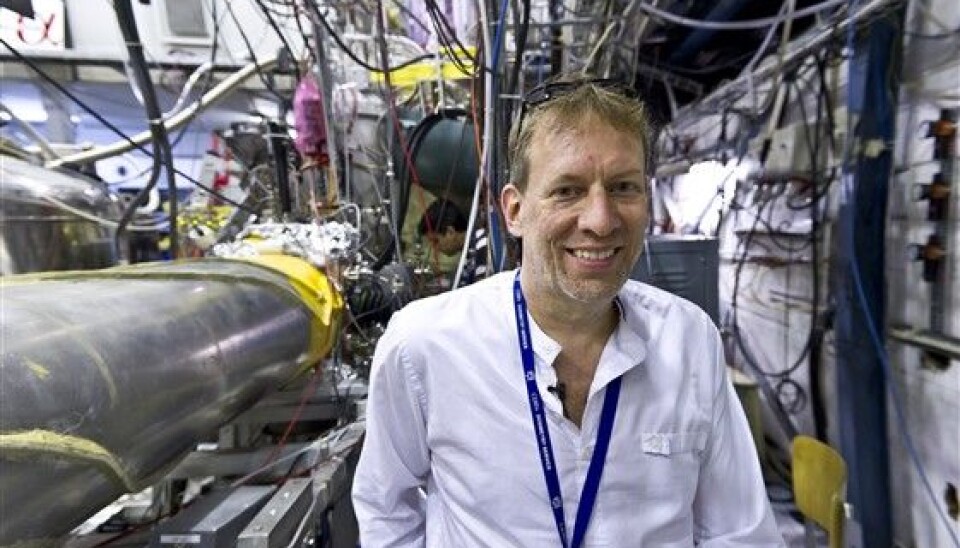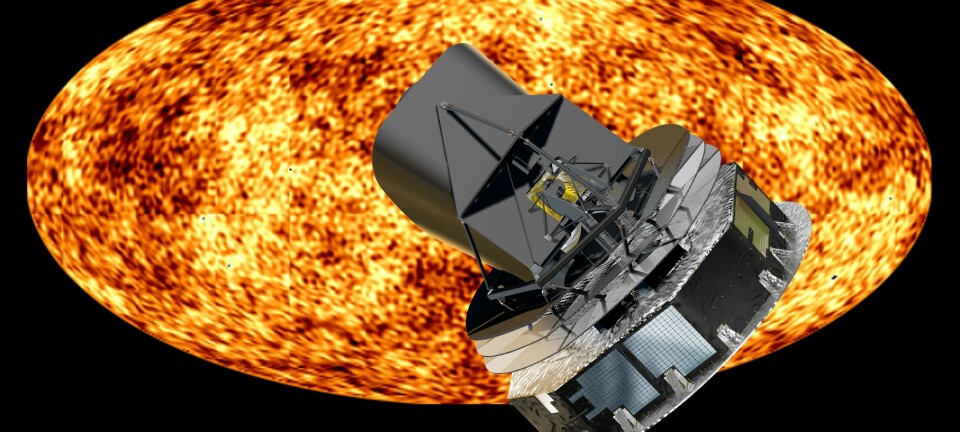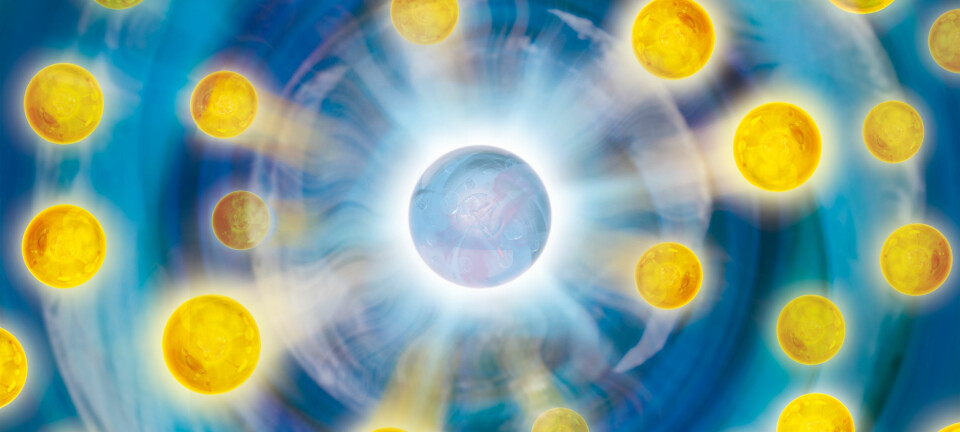
First ever quantum leap in antihydrogen atoms
A research group at CERN has developed a method of mapping the inner structure of an antihydrogen atom. It’s now possible to determine once and for all whether matter and antimatter are exact mirror images of each other.
For the first time ever, scientists have managed to create a quantum leap in the simplest form of antimatter, antihydrogen.
The ALPHA research group at the European nuclear research centre CERN has now demonstrated that it’s possible to map the inner structure of antihydrogen.
In a paper published yesterday in Nature, the researchers say they have now taken a decisive step towards answering one of the fundamental questions of physics – why everything around us consists of matter.
“According to the Big Bang theory, the universe was born with equal amounts of matter and antimatter, which are exact mirror images of each other,” says ALPHA spokeperson Jeffrey Hangst, of the Department of Physics and Astronomy at the University of Aarhus.
We need to figure out whether hydrogen and antihydrogen belong to the same category – whether they’re governed by the same laws of physics. This could tell us quite a bit about whether there is symmetry in physics, and how time and space are structured. Now we know that it’s only a matter of time before we find the answer.
“So if the Big Bang theory holds up, there must be an explanation to why the antimatter has vanished.”
Possible differences between hydrogen and antihydrogen
A possible explanation to why the universe has evolved to contain much more matter than antimatter is that the two may not be as similar as scientists think.
Even tiny structural differences in matter and antimatter could explain why the antimatter has vanished and virtually all that remains now is matter.
The ALPHA team is now planning to compare a regular matter atom to its equivalent antimatter atom to check for differences.
There’s no doubt about it: this is by far the greatest result in my career.
This process requires that the researchers produce sufficient amounts of antimatter atoms and trap them long enough to map their inner structure.
Over the past decade, ALPHA has solved the first two challenges by:
1. producing thousands of antihydrogen atoms, which are the simplest forms of antimatter.
2. finding a way of trapping the antihydrogen atoms for more than 15 minutes.
These two breakthroughs alone have proved to be such great scientific triumphs that they have been honoured with a long series of publications in Nature.
The researchers have now started embarked on final challenge by demonstrating that they can trick the antimatter atoms into turning their insides out.
“With our method, we have shown how we can map the internal structure of an antihydrogen atom,” says Hangst.
“We have now taken the first step towards finding out whether antihydrogen behaves exactly like hydrogen or whether there are any essential differences. Our studies have shown that it’s possible to design experiments that can produce detailed measurements of antihydrogen.”
Mirror images
In their new experiment, the team has drawn inspiration from the method used for mapping the structure of a hydrogen atom.
A hydrogen atom is ’quantised’, which means that it has energy levels that are separated from one another by distinct amounts of energy.
The hydrogen atom consists of a positively charged nucleus, orbited by a negatively charged electron. When the electron receives a certain amount of energy, equal to the difference between two specific energy levels, the electron jumps out of its orbit and moves a notch farther away from the atomic nucleus.
By irradiating the hydrogen atoms with light, containing a certain amount of energy, the researchers can force the atom into a higher energy state.
However, the electron prefers to stick close to the nucleus, so after a very short period it will jump back to its original state – the ground state.
By studying this process, the researchers can gain detailed insight into the energy levels of the hydrogen atom.
The combined frequencies (wavelengths) of the emitted light create a spectrum that is characteristic of hydrogen.
According to the basic laws of physics, hydrogen and antihydrogen should have identical spectra – provided that their inner structures are actually identical. And it is this hypothesis that the ALPHA group is now able to test, thanks to its new method.
The experiment shows the way forward
The article in Nature describes the first rough measurements of the antihydrogen spectrum.
In the experiment the antihydrogen atoms were trapped in a complex magnetic field. By irradiating each antihydrogen atom with microwaves with a frequency that creates quantum leaps in hydrogen, the researchers managed to get the antihydrogen atom to jump into a higher energy level, thus escaping the trap.
A split second later, the antihydrogen atom came into contact with matter and was converted into energy in a so-called annihilation process, which the researchers registered with their detectors.
They then exposed the antihydrogen atoms to radiation with a frequency that was detuned from those that create quantum leaps in hydrogen.
Just like it wouldn’t have done with hydrogen atoms, these frequencies didn’t create a quantum leap in the antihydrogen atoms either, so in that respect hydrogen and antihydrogen behave identically.
“Our experiment demonstrates that we can create quantum leaps in an antihydrogen atom by exposing it to radiation that has exactly the same frequency as the one required for creating a quantum leap in hydrogen,” says Niels Madsen, a Danish senior researcher at Swansea University in Wales. who's also a member of the ALPHA group.
“And, as with hydrogen, the antihydrogen atoms do not react when exposed to radiation that’s not in this frequency range,” he adds.
So hydrogen and antihydrogen behaved identically in this experiment, but that’s far from enough to determine whether this holds true in general. Lots of further detailed studies are required to arrive at that conclusion.
“No-one expects that hydrogen and antihydrogen are any different at the levels we have studied. "But it’s remarkable that we have been able to do this measurement with only a single anti-atom trapped at any given time," says Madsen.
“Our next challenge will be to study whether there is complete consistency in the details, which we will be able to determine by measuring a significantly larger amount of transitions.”
-----------------------------
Read this story in Danish at videnskab.dk
Translated by: Dann Vinther
Scientific links
External links
- Jeffrey Hangst's profile
- Niels Madsen's profile
- The ALPHA research group at CERN
- About antimatter (Wikipedia)
- Press release from CERN








